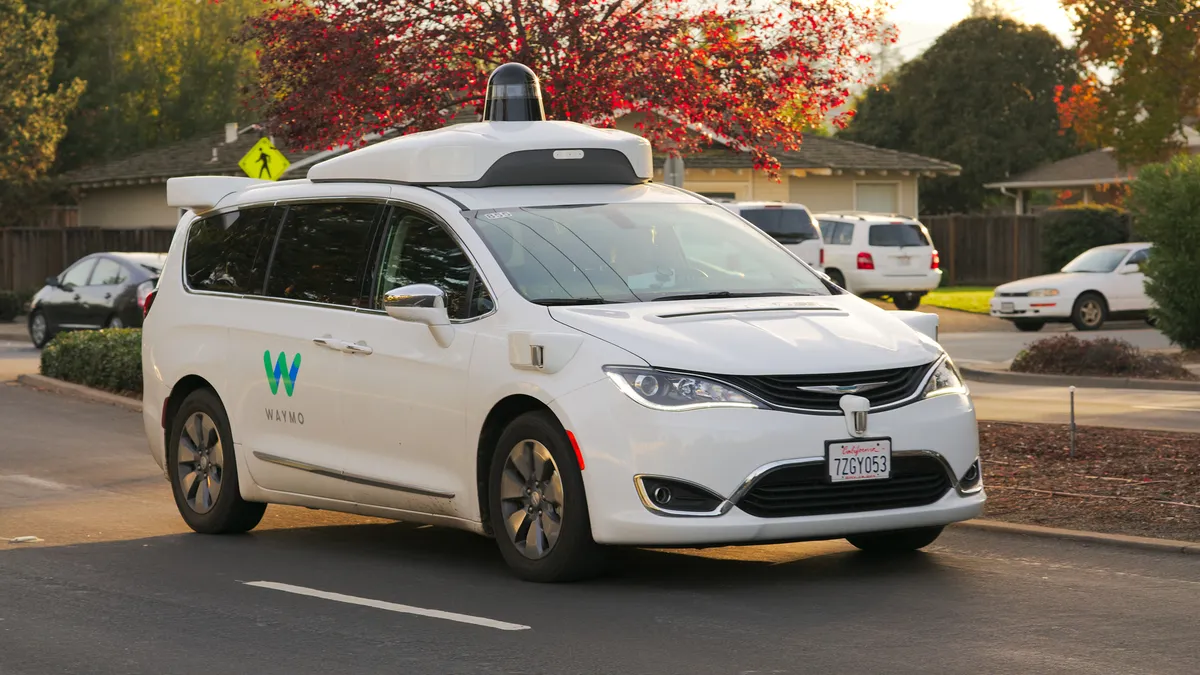Dive Brief:
- The U.S. Department of Transportation (DOT) on Thursday released updated rules for autonomous vehicles (AVs) that will no longer "assume" a human driver or operator, opening the door for automakers to test designs that do not need human control.
- In order to streamline deployment of AVs, the National Highway Traffic Safety Administration (NHTSA) will seek public comment on how it can more efficiently process exemption petitions, which automakers seek to test vehicles that do not meet current safety standards. The government will also work with automaker associations and other organizations to develop voluntary standards, which it says are an "effective non-regulatory means" to speed up technology.
- The Automated Vehicles 3.0 (AV 3.0) guidance does not replace the AV 2.0 guidance issued last year. That means, for example, the DOT is still seeking voluntary safety reports from automakers.
Dive Insight:
The DOT rules come in the absence of regulatory language from Congress. The U.S. House last year passed a sweeping bill to set a national framework for autonomous technology, but the Senate’s AV START (American Vision for Safer Transportation Through Advancement of Revolutionary Technologies) bill has stalled on the floor amid some safety concerns. That’s left the industry seeking help from the administration to clear up cross-state issues and create temporary safety exemptions to allow for testing.
In a joint statement, U.S. House Energy and Commerce Committee Chairman Greg Walden, R-OR, and Digital Commerce and Consumer Protection Subcommittee Chairman Bob Latta, R-OH, said they "share in the urgency for a unified safety framework across state lines" and applauded DOT's new guidance. "The U.S. is at a critical point in the development of this life-saving technology, and if we can’t get policy on the books, we stand to lose jobs, investment, and innovation to other countries," the pair added.
As automakers charge ahead on autonomous vehicles, public concerns still remain about their safety, especially following the fatal collision between an Uber self-driving car and a pedestrian in Arizona in March. An August survey from Cox Automotive found that only 45% of respondents thought AVs were safe; a February Gallup poll found that more than half of respondents were “unlikely” to use a driverless car.
In a letter introducing the document, Transportation Secretary Elaine Chao acknowledged that "the public has legitimate concerns about the safety, security and privacy of automated technology" and called on Silicon Valley "and other innovators" to help inform the public about the benefits of automation.
In a statement, the Center for Automotive Safety said the administration "continues to insist that eliminating regulation is the way to achieve safety" and that NHTSA "should require those wishing to use public roads ... to submit evidence to NHTSA that their technology is safe before involuntarily involving human beings in their testing."
Notably, the new guidance doesn’t limit itself to NHTSA, but also includes input from agencies like the Federal Motor Carrier Safety Administration (FMCSA) and the Federal Railroad Administration (FRA). FMCSA, for example, will be examining regulations around autonomous trucks, which could open the door for more research into autonomous technology for long-haul shipping and delivery.











